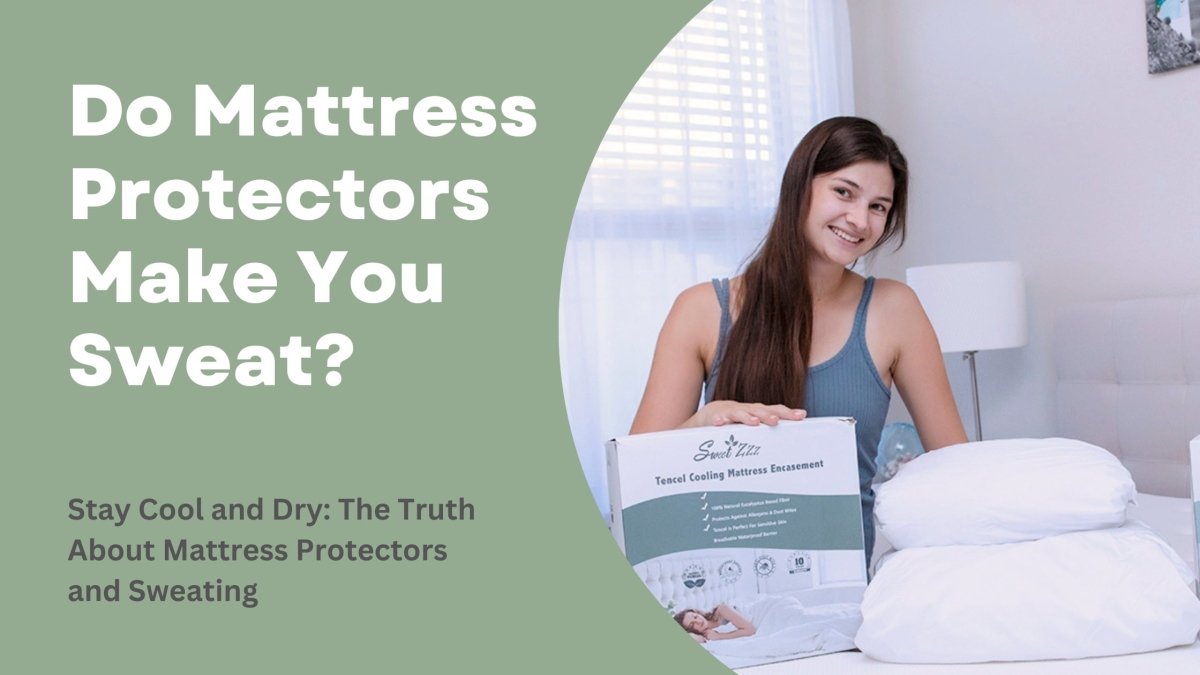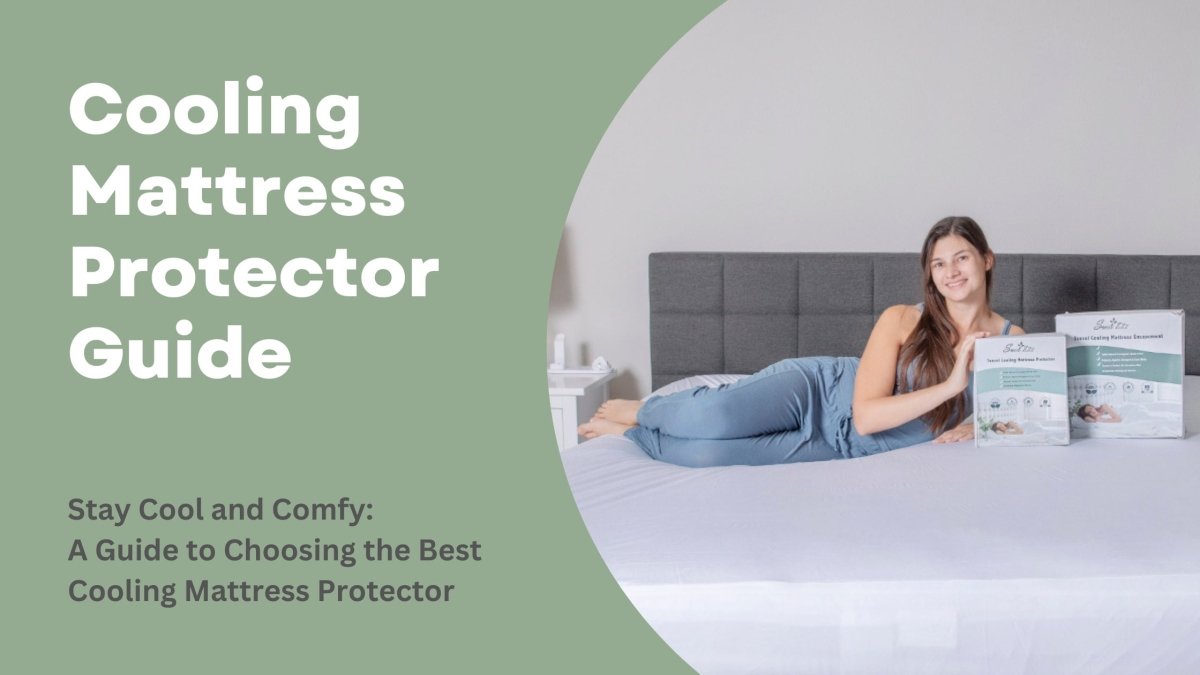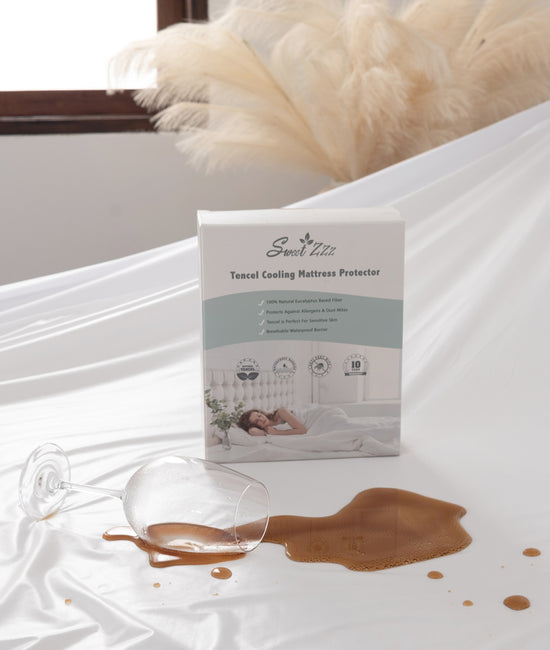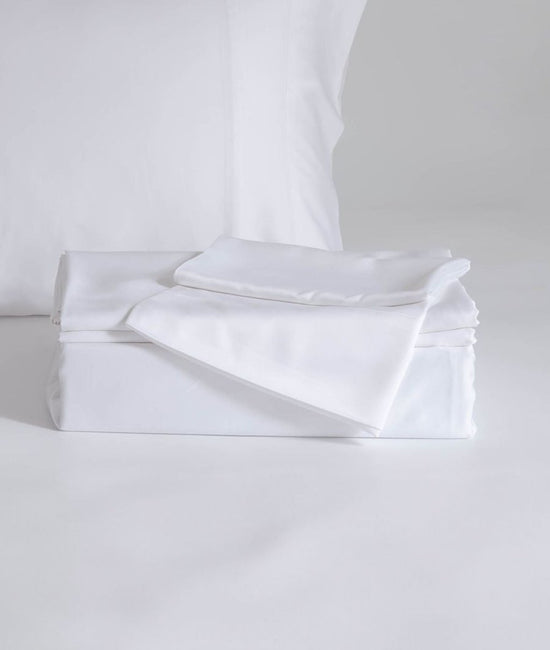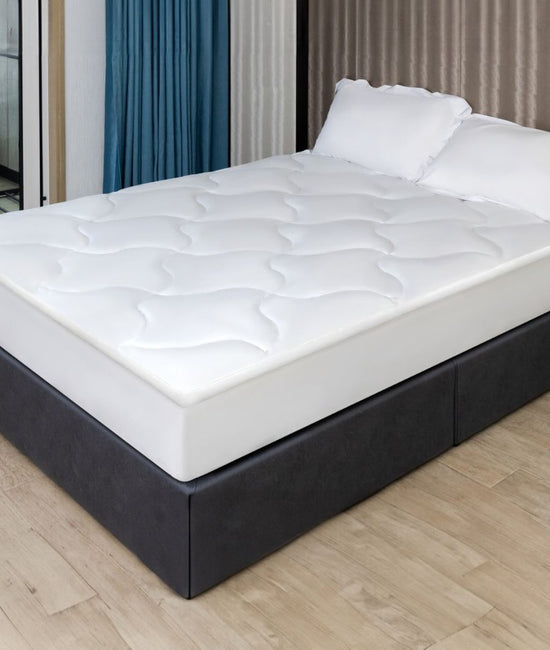Can This Be The Reason You’re Sweating at Night?
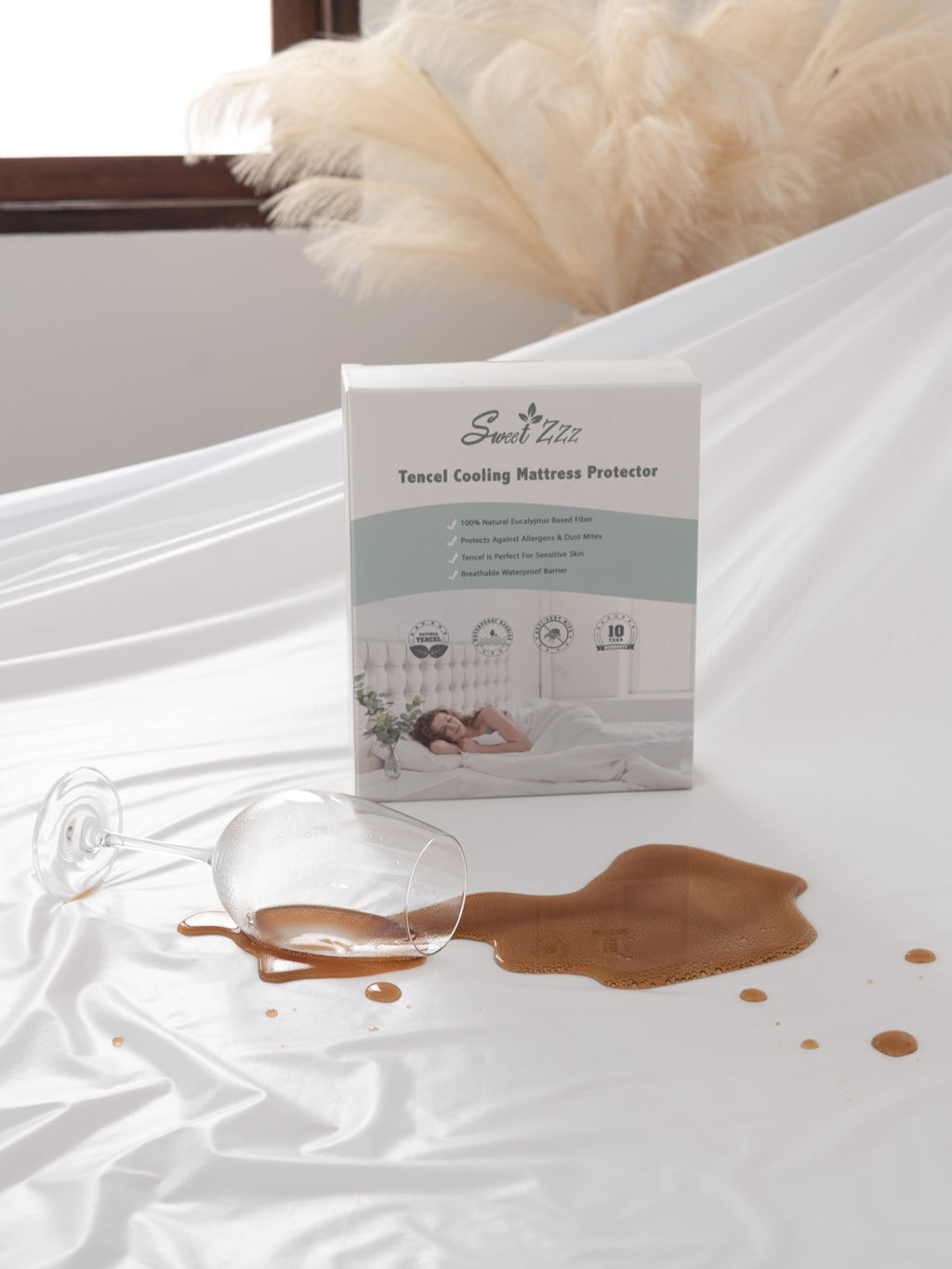
One of the most common questions asked about mattress protectors is “Do mattress protectors make you sweat?” The answer is yes, cheap plastic-y ones do indeed make you sweat. Considering that a mattress protector is a must to protect your expensive mattress from dirt, stains, spills, dust mites, and other allergens. You can't afford to not have one.
But waking up drenched in sweat is no fun, and, understandably, you would sooner ditch that mattress protector then wake up another night soaking wet. That's why cooling mattress protectors exist. To help people sleep comfortably without waking up hot and sweaty every night.
However, not every cooling mattress protector works. That’s why this guide tells you what to look for in a good cooling protector.
Why do mattress protectors make me sweat?
To understand how cooling protectors work, we must first analyze the problem.
A mattress protector’s main function is to protect the mattress from dirt, spills, and stains. It also provides a hygienic environment to sleep on, by acting as a barrier between you and the mattress. This barrier keeps dust mites and other allergens away from you.
For a mattress protector to perform these functions, it must have a waterproof barrier. The most effective barriers are made of plastic materials.
As we sleep at night our body heats up. Without proper circulation between the body and bed, hot air is trapped creating an unbearably hot sleeping environment. Depending on the breathability of the plastic membrane that coats your waterproof mattress protector, you can either sleep very hot or not.
Additionally, the cover material of your mattress protector can also cause you to sleep hot. You want to look for protectors made of natural materials such as cotton, bamboo, or Tencel, a new cooling fabric that has shown to be very effective.
How do cooling mattress protectors work?
Cooling mattress protectors work by absorbing extra heat and regulating your body temperature. They make the mattress feel cooler and comfier. While also alleviating night sweats and lowering your body temperature.
The body needs a lower temperature to fall and stay asleep. That's why getting too hot disrupts your sleep. Cooling mattress covers use cooling technology and cooling materials to keep the bed cool at night. When you heat up, the cooling material absorbs the extra heat and releases it to the air keeping you cool. Some materials are also highly absorbent and absorb excess moisture away from you to keep you dry and comfortable.
What to look for in a cooling mattress cover?
When it comes to choosing a cooling mattress cover, there are specific requirements you should look out for. But the most important are the materials used.
Materials
Cooling protectors use cooling fabrics which dissipate heat faster than other fabrics. You need to keep an eye out for the cover material and the waterproofing material.
Cooling fabric
The best cooling fabrics are natural. Some of the best options are cotton, bamboo, and Tencel.
Cotton
Cotton is highly breathable and great at moisture wicking.
Its high absorption rate helps keep you dry and comfortable. When a cotton fabric is saturated with moisture, it releases extra moisture to the air creating that cooling evaporation effect on the skin. Cotton is also soft and comfortable on the skin.
Bamboo
Bamboo is a natural fabric derived from the pulp of bamboo trees.
It comes with many benefits such as its hypoallergenic nature, soothing texture, and cooling ability.
Bamboo, just like cotton is moisture-wicking and highly breathable. It's also less likely to have odors as it prevents the growth of odor-causing germs and bacteria.
It's great for sensitive skin and keeps cool all night.
Tencel
Tencel is a botanic fabric derived from the pulp of Eucalyptus, Birch, and Oak trees.
It's a relatively new fabric that is praised for its cooling capabilities. Originally used to make athletic clothes, the bedding industry saw it's potential in creating cooling bedding. It has not disappointed.
Tencel Lyocell mattress protectors are highly breathable, moisture-wicking, and hypoallergenic.
Because of its hydrophilic (water-loving) properties, Tencel is almost twice more absorbent than cotton. It’s able to absorb lots of moisture before it can feel wet. Keeping the sleeper cool and dry, longer. Its silky-smooth texture is great for sensitive skin and very cool to touch.
Waterproofing materials
Polyurethane
Polyurethane is a thin, non-toxic membrane used in mattress protectors.
It's thin and flexible nature makes it undetectable and silent at night.
Polyurethane is much more breathable than Vinyl and a superior waterproof barrier.
It has microscopic pores that allow free airflow. This helps keep you cool during the night.
It's a great choice for a cooling mattress protector because it not only prevents the transmission of spills, stains, dirt, and bugs. But also helps you sleep cooler.
Besides, it's a durable material compared to its counterparts.
Vinyl
Vinyl is the most effective barrier against spills, stains, and bugs. However, it's not as breathable as polyurethane and often sleeps hot.
While its thickness is great at preventing transmission of any undesirables. It also helps trap heat and moisture creating a very hot and sticky sleeping surface.
Vinyl also tends to be a bit noisy at night.
Size
You might solve the sweating problem but still wake up to re-adjust your mattress protector. That’s why it’s important to get the right size. Before purchasing a mattress, protector measures the depth of your mattress, then get one that fits. There are three types of mattress protectors:
- Encasement
- Fitted
- Anchored
Each of these has its pros and cons. Encasement protectors are 6-sided and cover every inch of the mattress. They are great at keeping bugs out. However, they tend to sleep warmer because of poor air circulation in the mattress.
Fitted protectors are 5-sided. They are put on the mattress like fitted bed sheets. They sleep cooler and are also much easier to handle. The only downside is that they do not protect the bottom side of the mattress.
Anchored/Strapped mattress protectors are one-sided. They cover the top of the mattress and are anchored to the mattress using straps. This type sleeps cool but keeps popping off the edges and shifting. They are usually thicker than the other two so they may change the way your mattress feels
Wrapping up
Hopefully, this article answered the question “Do Mattress Protectors Make You Sweat?”. While it’s important to protect your mattress, your sleep health matters as well. If your mattress protector causes you to wake up hot and sweaty at night, then it’s time to consider a cooling mattress protector.
Remember a good cooling protector uses natural cooling fabrics, is breathable, and fits well.


